The Ultimate Guide to South Tyrol, Dolomites, Veneto, and Trentino, Italy 🇮🇹: Must-sees, Top Hotels, Hiking Trails & Travel Tips
- May 28
- 64 min read
Updated: 8 hours ago
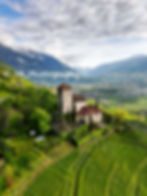
South Tyrol, Dolomites, Veneto, and Trentino Regions, Italy- Introduction:
South Tyrol, the Dolomites, Veneto, and Trentino regions, Italy, are a charming destination that captivates you from the very first moment. With its dramatic Dolomite peaks, lush valleys, and a unique blend of Alpine and Mediterranean cultures, it offers an unparalleled experience. Whether you are hiking through vibrant meadows, savoring local wines, or exploring charming villages, South Tyrol presents a rich tapestry of adventures for every traveler.
In this trip summary post, we will highlight our journey through South Tyrol, featuring must-see sights and activities, as well as our top tips and practical advice for optimizing your trip to help you plan an unforgettable adventure. At the end of the guide, we have included our pre-prepared Google Maps list of all the mentioned locations to assist you with your itinerary planning and for easier navigation.
Topics that we will mention in the guide about South Tyrol, the Dolomites, Veneto, and Trentino, Italy:
*Please note that this post may include affiliate links. This means that if you decide to purchase something through these links, we may receive a commission at no additional cost to you. Rest assured that these are quality products from reliable websites. Your support through these purchases also allows us to invest in and improve the website for your benefit. For more information, please refer to our site's regulations and terms of use.
.
Essential Travel Tips for South Tyrol, Dolomites, Veneto, and Trentino Regions, Italy
Weather in the region 🌤: The weather in the region varies greatly with altitude. Valleys typically have warmer, sunny days (summer-spring days), while mountainous areas can experience sudden changes, including afternoon thunderstorms. Winters can be cold and snowy, particularly in the mountains. To stay informed, we recommend visiting the official Weather South Tyrol website or using their free mobile app. Both provide detailed forecasts, real-time radar, and alerts for each municipality, helping you to be prepared for the region's dynamic weather conditions during your visit.
Getting Around: Renting a car is the most convenient way to explore South Tyrol, especially if you intend to visit small mountain villages, scenic viewpoints, or lesser-known towns. While public transport is available in larger towns, it tends to be less reliable in more remote areas.
Driving Tips: Italy's highways, known as autostrade, are toll roads. In the closed toll system, you'll collect a ticket when entering the highway and pay the toll upon exiting, based on the distance traveled. In the open toll system, a flat-rate toll is paid at specific barriers along the route, regardless of the distance. Be attentive to signage indicating the type of toll system in use. Avoid lanes marked "Telepass" unless you have the appropriate electronic toll device. For more information on toll payments, refer to the official Autostrade per l'Italia guide.
If you are driving in Italy, it's important to avoid entering the ZTL zones. These zones are located in Italian cities with historic centers and have restricted circulation. Only residents of the city are usually allowed to enter these zones with the required registration. If you enter ZTL zones without the proper registration, you may face a fine. For example, the historic center of Bolzano or Trento is a ZTL zone.
Currency: The official currency is the Euro (€). Credit and debit cards are widely accepted, but it is advisable to carry some cash, especially in smaller villages or for tolls and local markets.
Tipping: Tipping is not obligatory in Italy, but it is appreciated. Rounding up the bill or leaving a tip of 5–10% for good service at restaurants is customary. In cafés, it is common practice to leave some coins.
Seasons to Visit:
The best times to visit are spring (May–June) and early autumn (September–October), which offer pleasant weather, fewer crowds, and stunning scenery.
Summer (July–August) is peak season—ideal for outdoor activities such as hiking, though it can be busy and the weather is hotter.
Winter attracts visitors to South Tyrol for skiing and cozy alpine towns.
Itinerary Tip: To fully experience the region, consider changing locations every 2–3 days. For example, spend a few nights in one southern area, then move to another northern area for a change of scenery and pace.
If you're traveling from Milan to South Tyrol, consider adding Lake Garda to your itinerary. This stunning lake is conveniently located along your route, nestled between the Alps and the Po Valley, offering a perfect blend of natural beauty and cultural charm. Whether you're interested in exploring picturesque towns like Sirmione, engaging in water activities, or simply relaxing by the lake, Lake Garda is a delightful stopover. For more details and tips on making the most of your visit, check out our comprehensive trip summary post about Lake Garda by clicking here.
Language: German is widely spoken in South Tyrol alongside Italian. In tourist areas, many locals speak basic English, but learning a few local phrases is always appreciated.
.
Arrival to South Tyrol, the Dolomites, Veneto, and Trentino Regiones, Italy:
By Airplane 🛬: The nearest airport is Bolzano Airport, which offers limited flights. For more options, consider Innsbruck Airport in Austria, approximately 120 km away, or Verona Villafranca Airport, about 150 km from Bolzano. Both airports provide good connections to South Tyrol via train or bus.
Note: South Tyrol is also easily accessible from Venice.
By Train🚆: Major towns like Bolzano, Merano, and Bressanone are well-connected by train. You can reach these destinations via the Brenner Railway, which links Innsbruck to Verona while passing through South Tyrol.
By Car🚗: Driving provides the flexibility to explore the region's mountainous terrain. The A22 Brenner Motorway connects South Tyrol to Austria and other parts of Italy.
Note on Toll Roads: Italian motorways are toll roads. Depending on the section, you may collect a ticket upon entry and pay upon exit, or pay a fixed fee at the start. Be attentive to signs indicating the toll system in use.
By Bus 🚌: Long-distance buses offer affordable routes to major towns like Bolzano and Merano from various European cities.
Long-distance buses, such as FlixBus (click here for more details), offer affordable routes to major towns in the region from various locations across Europe.
SIM for internet connection:
If your device supports a virtual SIM (E-SIM), in order to save money and time, we highly recommend purchasing a virtual SIM from the company "Airalo", a very popular and excellent company among travelers. You can purchase the E-SIM through the following link: click here to purchase, or using the app: click here to purchase.
A second option is to buy a SIM in the city center from one of the local cellular providers.
.
Recommended Accommodation in South Tyrol, Dolomites, Veneto, and Trentino, Italy:
To fully appreciate the diverse beauty of this remarkable region, we highly recommend changing your accommodation every one to three nights and staying in different areas. This approach allowed us to uncover the unique charm of each location at a relaxed pace, and it turned out to be one of the best decisions of our trip.
During our journey to South Tyrol, we had the pleasure of staying at Hotel Der Waldhof in Völlan—a tranquil 4-star retreat nestled among the forested hills, with stunning views of Mayenburg Castle. The rooms were spacious and thoughtfully designed, featuring balconies, air conditioning, and modern amenities.
A highlight of our stay was the 22-meter heated infinity pool, which offered breathtaking views of the surrounding landscape. Even in winter, the warm water makes it a perfect spot to relax and soak in the scenery. The dining experience was equally memorable. Each evening, we enjoyed a meticulously crafted multi-course dinner that showcased the chef's talent and passion for local ingredients. The combination of flavors and presentation made every meal a highlight of our day.
The hotel's wellness facilities added to our relaxation, with options like a panoramic sauna, an indoor pool, and serene garden spaces. After days filled with exploration, returning to Der Waldhof felt like coming home.
If you're planning a visit to South Tyrol, we wholeheartedly recommend booking a stay at Der Waldhof, especially if you include the dinner option. It's an experience that beautifully complements the natural and cultural richness of the region. To get an impression of the room, check out the reel we have uploaded: click here to see it. For Booking and more details, Click Here.
The second hotel we stayed at during our trip to South Tyrol was Hotel Aktiv&Bio Pennhof, a charming 3-star eco-hotel located in Barbiano, in the Eisacktal Valley. Situated at an elevation of 800 meters above sea level, it offers breathtaking views of the Dolomites and the surrounding valleys. Our room was spacious and thoughtfully designed, featuring a balcony that allowed us to fully enjoy the stunning landscape. The wellness facilities, including a natural swimming pool, sauna, and hot tub, provided the perfect way to relax after a day of hiking. The on-site restaurant served delicious meals, with options catering to various dietary needs. It’s worth noting that the road leading to the hotel is narrow and winding, which can be a bit challenging. However, the peaceful atmosphere and panoramic views make the journey worthwhile. If you’re looking for a tranquil escape immersed in nature, Aktiv&Bio Pennhof is an excellent choice. For Booking and more details, Click Here.
.
For hotels or apartment booking, we recommend using one of three options:
Important tip: It is recommended to check prices on each website and book where the best conditions and prices are available.
1. For hotel or apartment reservations we suggest using Booking.com, a convenient and excellent site that allows you to find the best price for a hotel or apartment, a site that is very common and popular with travelers around the world, offering more than 28 million apartments/hotels from around the world. The company has a customer service that works 24/7 with ease. For booking and more details Click here for the website or use the search below:
2. Another great site for booking hotels is Tripadvisor, a trusted platform that helps you uncover amazing deals supported by millions of honest traveler reviews. With various accommodations and an easy-to-use interface, you can easily compare prices, read real experiences, and book confidently. Their user-friendly platform and extensive database make finding the perfect stay effortless. Click here for booking and more details.
3. An additional reliable platform for accommodation booking is "Agoda", the platform makes discounted rates available at approximately 2.9 million hotels and private homes around the globe, ranging from budget options to five-star luxury . For booking and more details, Click here for the website or use the search below:
Suggested websites, which we use when we are planning our trips:
1. When it comes to renting a car for our adventures, "Rentalcars.com" is one of our top choices. As a proud member of Booking Holdings, they are the world's largest online car rental service, delivering exceptional deals in over 160 countries. With millions of bookings yearly and round-the-clock customer support, they make finding the perfect rental effortlessly simple. If you're seeking a seamless and stress-free way to compare prices and secure your ideal vehicle, click here to explore the possibilities and for more details! Or use the link below:
2. Another option that we use when we embark on our adventures is "DiscoverCars" our choice for car rental comparison. This user-friendly comparison website effortlessly connects you with the best deals from leading rental companies across the globe. With its stellar ratings on TrustPilot and accolades from the World Travel Awards, it has earned its reputation as a reliable, hassle-free option for securing rentals. Thanks to numerous glowing customer reviews and dependable service, booking a car becomes a seamless experience. If you're planning a trip and need a rental, it's definitely worth checking out—click here to compare prices and book! Or use the link below:
3. During our hiking adventures, we consistently rely on the AllTrails app, an invaluable companion for discovering and navigating the diverse hiking trails in the region. With an extensive collection of over 450,000 trails worldwide, the app features detailed maps, user reviews, and photos, allowing us to customize our hikes according to our preferences and skill levels. Real-time GPS tracking helps us stay on course, while offline maps are essential in areas with limited connectivity. Whether exploring popular trails or seeking natural hidden gems, AllTrails enriches our hiking experiences and deepens our appreciation for South Tyrol's natural beauty. For more details, click here.
4. During our travels in Europe, the EasyPark app is essential for managing car parking. With this great app, we were able to start and stop our parking sessions directly from our smartphones, which eliminated the hassle of dealing with coins and meters. A standout feature of the app is the ability to extend parking time remotely, so we never had to rush back to the car. Additionally, the app’s integration with city systems allows for digital verification of parking sessions, removing the need for physical tickets. Although there is a service fee of about €0.49 per session, the convenience it offers makes it a valuable travel tool. If you're driving through Italy or anywhere else in Europe, we highly recommend downloading the EasyPark app in advance. For more details, click here.
.
5. For a safe and convenient place to store your luggage while exploring a city—before a flight or hotel check-in—"Radical Storage" is our top choice. With a presence in over 70 countries and 500 cities, they offer thousands of secure locations. Booking online is quick, and each bag is insured for up to €3000€/$/£ for your peace of mind (subject to the website's terms). Discover the freedom to travel stress-free—check it out here!
6. We constantly check TripAdvisor for the best hotel deals and must-do activities when planning a trip. With over a billion reviews and insights from real travelers, it’s the perfect tool to find and book accommodations and experiences. Click here for more details and book your stay and things to do!
.
7. "WayAway" unlocks the best flight deals while rewarding you with cashback on all your travel expenses through the WayAway Plus membership. Whether you’re booking flights, securing hotels, renting cars, or planning tours, WayAway ensures you save money on every adventure. User-friendly and brimming with benefits, it’s the ultimate companion for the savvy traveler. Discover unbeatable flight comparisons and start maximizing your savings—click here for more details!
.
8. Discover the ultimate travel companion for your adventure with Trainline — Europe’s premier train and coach website. Partnering with over 210 rail and coach companies, Trainline offers seamless access to thousands of destinations across 45 countries. Simplifying your travel experience, Trainline brings together all rail, coach, and other travel services into one convenient platform. With real-time information and the best available prices, Trainline ensures you make the most of every journey. Join the millions of savvy travelers who rely on Trainline. For booking tickets and timetables, click here or use the link below:
9. Explore unforgettable adventures with "GetYourGuide" your key to incredible travel experiences worldwide. From skip-the-line tickets to iconic attractions to immersive culinary classes and top-rated walking tours, GetYourGuide opens doors to unique offerings you won't find anywhere else. Dive into exclusive GetYourGuide Originals for an extraordinary exploration. Enjoy regular promotions and access the best tours in 23 languages and 40 currencies. Discover curated experiences and top activities.
To unveil thrilling opportunities and kickstart your journey of bookings, simply click here for the website or use the link below:
10. Unlock the beauty of South Tyrol without any travel hassle by using Omio. With over 1,000 transportation providers collaborating on this comprehensive platform, you can easily find train, bus, flight, and ferry tickets, as well as car rentals and airport transfers. Omio streamlines the process of comparing transportation options, ensuring you find the best prices to suit your budget. Enjoy seamless planning and get ready to explore your destination with ease. To book your tickets and check timetables, click here Or use the search below:
11. "Tiqets" is your go-to for instant and hassle-free mobile booking tickets to museums and attractions worldwide. Join the millions enjoying Tiqets' innovative technology, allowing last-minute ticket purchases on your phone. Printed tickets are unnecessary; show your digital pass at museums and attractions. With direct partnerships, Tiqets offers same-day tickets, even on-site or inline. Skip the queues with their skip-the-line options. Discover the world with Tiqets, offering passes in Europe and the US. Your adventure awaits—buy your tickets effortlessly with Tiqets and make every moment extraordinary! To unlock exciting possibilities and start your booking adventure, click here for the website or use the link below:
12. For private transportation booking head from place to place, especially for large groups. We suggest using "GetTransfer". For booking and more details, Click here for the website.
.
13. No matter where your adventures lead you, EKTA Insurance is your trusted partner, offering swift and seamless travel and health insurance solutions. Secure your policy online in just 2-3 minutes, benefiting from comprehensive worldwide coverage, inclusive COVID-19 protection, and 24/7 multilingual support. With a decade of dedicated experience and a commitment to transparency—free from hidden restrictions—EKTA provides reliable service for travelers aged 3 to 85. Embrace your journey with confidence and peace of mind! To book and discover more, click here.
.
Places, Towns, and Hiking Trails you shouldn't miss in South Tyrol, Dolomites, Veneto, and Trentino Regions, Italy:
1. Toblino Castle (Castel Toblino):
-If you're arriving by car, we suggest parking at: Parcheggio di Castel Toblino.
Nestled on a small peninsula along Lake Toblino, Toblino Castle is one of the most picturesque and storied castles in Trentino. Its origins date back to a 3rd-century pagan temple dedicated to fairies, as evidenced by a Roman inscription embedded in the castle's portico. Over the years, it evolved into a medieval fortress and later became a Renaissance residence under Cardinal Bernardo Cles and the Madruzzo family in the 16th century. The castle's romantic setting has inspired numerous legends, including tales of forbidden love and tragic drownings, which add to its mystique.
Today, Castel Toblino features an elegant restaurant, allowing visitors to dine amidst history while enjoying views of the serene lake. A leisurely walk around the lake provides stunning views of the castle and its lush surroundings, making it a must-visit destination in the Valle dei Laghi.

2. The wooden walkway near Toblino Castle (Passeggiata di Castel Toblino):
The wooden walkway near Toblino Castle offers a scenic lakeside stroll in Trentino's Valle dei Laghi, providing enchanting views of the medieval Castel Toblino and its tranquil surroundings. This easy, family-friendly path meanders along the edge of the lake and features wooden walkways along with informative signs about the area's rich flora, fauna, and history. Although the trail does not circle the entire lake, it offers numerous opportunities to admire the castle's reflection in the water against the backdrop of lush Mediterranean vegetation. Be aware that some sections of the path are close to a quite busy road, which may slightly affect the tranquility of the experience.
For a more extended outing, consider combining this walk with a visit to the nearby Lake Santa Massenza, where you can explore the picturesque landscapes that make this region a hidden gem in northern Italy.
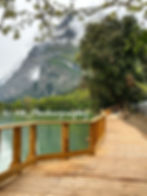
3. Trento:
-If you're arriving by car, we suggest parking at: Parcheggio Sanseverino (The parking lot requires payment at the onsite machines, either by credit card or cash/ EasyPark app).
Trento, the capital of Trentino, is an enchanting city located in the Adige Valley, surrounded by the stunning Dolomite mountains. Its rich history is showcased in landmarks such as the 12th-century Trento Cathedral and the Castello del Buonconsiglio, a former bishop's residence adorned with beautiful Renaissance frescoes.
In addition to its historical sites, Trento boasts a vibrant cultural scene featuring museums, art galleries, and lively piazzas. The city's architecture, cuisine, and traditions reflect a blend of Italian and Austrian influences. Whether you're wandering through its medieval streets, savoring local wines, or using it as a base for alpine adventures, Trento offers a unique and enriching experience in northern Italy.
4. Trento Cathedral (Duomo di San Vigilio):
Trento Cathedral, also known as the Duomo di San Vigilio, is a remarkable representation of the city's rich historical and religious heritage. Construction began in 1212 under the guidance of Bishop Federico Vanga, and the cathedral features a blend of Romanesque and Gothic architectural styles. It is built on the remnants of a 4th-century basilica and is dedicated to Saint Vigilius, the patron saint of Trento, whose tomb is located inside the cathedral.
The cathedral became prominent as the main venue for the Council of Trent, which took place from 1545 to 1563. This series of meetings was crucial in the Counter-Reformation. Noteworthy features of the cathedral include the intricate rose window known as the "Wheel of Fortune," 14th-century frescoes depicting the legend of Saint Julian, and the Baroque Chapel of the Crucifix, which contains a wooden crucifix used during the council sessions.
You can also explore the archaeological remains of the early Christian basilica beneath the cathedral, providing a glimpse into Trento's ancient past. Located in the heart of Piazza Duomo, the cathedral stands as a significant landmark and is a must-visit for those interested in history, architecture, and spirituality.

5. Cathedral Square (Piazza del Duomo di Trento):
Piazza del Duomo is the vibrant heart of Trento's historic center, showcasing centuries of religious, civic, and artistic heritage. The square is dominated by the Romanesque-Gothic Cathedral of San Vigilio and features several notable buildings, including the 13th-century Palazzo Pretorio and the Civic Tower, which houses the Tridentine Diocesan Museum.
At the center of the square, the 18th-century Fountain of Neptune adds a Baroque touch, while the surrounding frescoed buildings, such as Casa Cazuffi and Casa Rella, highlight Renaissance artistry. The lively atmosphere, complemented by cafes and shops, makes this square an ideal place to enjoy Trento's rich cultural tapestry. Whether you're exploring its architectural wonders or sipping a leisurely coffee, Piazza del Duomo offers a quintessential Trentino experience.

6. Fountain of Neptune (Fontana del Nettuno):
Standing proudly at the heart of Piazza Duomo in Trento, the Fontana del Nettuno is a striking example of Baroque artistry and urban symbolism. Commissioned in 1767 by the city's civic authorities, the fountain was designed by architect Francesco Antonio Giongo of Lavarone and completed in 1769. The central bronze statue of Neptune, the Roman god of the sea, is a replica made after World War II; the original, sculpted by Stefano Salterio, was relocated to the courtyard of Palazzo Thun to protect it from further damage.
The fountain's elaborate design features a series of basins adorned with tritons, seahorses, and other mythological figures, all carved from white stone sourced from Arco. These sculptures were later replaced in the 19th century with replicas crafted by Andrea Malfatti, based on designs by painter Ferdinando Bassi. Beyond its aesthetic appeal, the Fontana del Nettuno serves as a historical emblem, symbolizing Trento's connection between the Alpine region and the sea. Its prominent position in the square, surrounded by Renaissance-era frescoed buildings, makes it a focal point for both locals and visitors, offering a picturesque setting that captures the essence of Trento's rich cultural heritage.

7. Civic Tower (Torre Civica):
The Torre Civica, or Civic Tower, is a notable medieval landmark located in Trento's Piazza Duomo. Built in the 12th century on the site of the Roman Porta Veronensis, it originally served as a defensive tower and later as a prison until the late 19th century. Standing at 45 meters tall, the tower is equipped with a clock and two historic bells: "della Renga" and "della Guardia," which were used to keep time and summon citizens.
Nowadays, after its restoration, you can climb eight of the tower's twelve levels, which consist of 156 steps, to enjoy panoramic views of the city. Access is available through guided tours organized by the Tridentine Diocesan Museum, providing insights into Trento's rich history, or by purchasing entrance tickets directly. For more details, click here.

---------
8. Belfort Castle (Castel Belfort):
-If you're arriving by car, we suggest parking at: parcheggio visitatori Castel Belfort.
Nestled between the towns of Cavedago and Spormaggiore in Trentino, Castel Belfort is a captivating medieval ruin that offers a glimpse into the region's rich history. Constructed in 1311 by Tissone di Altspaur under the concession of Count Henry of Tyrol, the castle was strategically positioned to oversee the area between Andalo and Molveno. Despite suffering a devastating fire in 1670 and being abandoned during the Napoleonic era, the castle's imposing crenellated tower and surrounding walls remain remarkably intact.
You can freely explore the site, where some sections feature metal staircases that allow for partial ascents, offering panoramic views of the surrounding landscape. Today, Castel Belfort stands as a testament to Trentino's architectural heritage, providing a serene and evocative setting for both history enthusiasts and casual visitors alike.

9. Parking (Parcheggio) and Rest Stop at Via Mattè, 25, 38010 Cavedago TN, Italy:
Located along Via Mattè in Cavedago, this convenient parking and rest stop offers more than just a place to leave your vehicle. From this point, you can enjoy a picturesque view of the Church of St. Thomas (Chiesa di San Tommaso), a 14th-century church situated on a hilltop, renowned for its historic frescoes and peaceful surroundings. This vantage point is perfect for photography and provides a serene moment to appreciate the natural beauty of the area. Whether you are passing through or exploring the region, this spot serves as a tranquil pause in your journey.
10. Church of St. Thomas (Chiesa di San Tommaso):
-If you're arriving by car, we suggest parking at: Parcheggio Cimitero Di Cavedago.
Located on a hill above Cavedago, the Church of St. Thomas (Chiesa di San Tommaso) is a peaceful 14th-century Gothic church that offers stunning panoramic views of the Val di Non and the Brenta Dolomites. Inside, you can admire medieval frescoes, including a depiction of Saint Vigilius, the patron saint of Trento. The church's tranquil setting and historical significance make it a worthwhile stop for anyone exploring the region.

11. St. Thomas Park (Parco San Tommaso):
-If you're arriving by car, we suggest parking at: Parcheggio Cimitero Di Cavedago.
St. Thomas Park, situated along the SS421 in Spormaggiore, is a serene green space that serves as a perfect resting point. It offers a beautiful view of the nearby Church of St. Thomas (Chiesa di San Tommaso). This tranquil location is ideal for relaxing and appreciating the surrounding natural beauty, making it a delightful stop during your exploration of the Trentino region.

12. Molveno Lake Viewpoint (Near the SS421 road before Molveno):
Just before approaching the town of Molveno from the Spormaggiore direction on the SS421 road, there is a scenic viewpoint that offers a breathtaking panorama of Lake Molveno and the surrounding Brenta Dolomites. This location features a peaceful rest area where travelers can pause to admire the turquoise waters of the lake, nestled among the majestic mountains. It is an ideal spot for photography enthusiasts and anyone looking to soak in the natural beauty of Trentino.

13. Molveno: A Lakeside Gem in the Brenta Dolomites
-If you're arriving by car, we suggest parking at: Parcheggio (Via Lungolago, 11, 38018 Molveno TN, Italy) (The parking lot requires payment at the onsite machines, either by credit card or cash/ EasyPark app).
Molveno is a picturesque alpine village located 864 meters above sea level on the northern shore of Lake Molveno, with the dramatic Brenta Dolomites serving as a stunning backdrop. Awarded the Touring Club Italiano's Orange Flag for excellence in tourism and sustainability, Molveno harmoniously blends natural beauty with cultural heritage.
The village's historic center features traditional wooden and stone buildings, charming craft shops, and cozy restaurants. Notable landmarks include the 13th-century Church of San Vigilio, which is adorned with Gothic frescoes, and the Taialacqua sawmill, highlighting the area’s woodworking history. Lake Molveno, formed approximately 4,000 years ago, is celebrated for its crystal-clear waters and has been repeatedly voted as Italy's most beautiful lake.
You can partake in a variety of activities, from swimming and kayaking to hiking and mountain biking in the surrounding Adamello Brenta Natural Park. Whether you're seeking adventure or relaxation, Molveno offers an idyllic setting to experience the tranquility and splendor of the Italian Alps.

14. Church of St. Charles Borromeo (Chiesa Parrocchiale di San Carlo Borromeo) and 16th-Century Clock Tower (Torre dell’Orologio del XVI Secolo):
Located in the heart of Molveno, the Church of St. Charles Borromeo (Chiesa di San Carlo Borromeo) is a testament to the town's rich religious heritage. Originally constructed between 1616 and 1630, the church underwent significant reconstruction in 1939–1940 to accommodate the growing community.
Despite suffering a devastating fire in 1976, it was meticulously restored, preserving its historical essence. Notably, the original Romanesque bell tower—with its distinctive bifora windows and pyramidal spire—remains intact and stands adjacent to the modern church structure. Inside, you can admire two exquisite 17th-century wooden altars dedicated to the Madonna and St. Anthony, as well as an intricately crafted main altarpiece.
Adjacent to the church, the 16th-century Clock Tower (Torre dell’Orologio del XVI Secolo) contributes to the historical charm of the area. This standalone bell tower, featuring the same bifora windows and pyramidal spire, serves as a visual reminder of Molveno's enduring architectural legacy. Together, the church and clock tower offer visitors a glimpse into the town's past, all set against the stunning backdrop of the Brenta Dolomites.
15. The Bridge over Rio Massò (Ponte sul Rio Massò) and The "Water Steps" (Scale d'Acqua):
In the heart of Molveno, a charming pedestrian bridge crosses the Rio Massò, adorned with vibrant flowers. This bridge not only connects different pathways but also provides a peaceful spot to pause and admire the clear waters flowing beneath it.
Just downstream, the 'Scale d'Acqua,' or 'Water Steps,' showcases a captivating series of small cascades as the stream gracefully descends toward Lake Molveno. These features create a tranquil atmosphere, making the area a favorite for leisurely walks and a popular destination for photography enthusiasts looking to capture the natural beauty.
16. Lucilla Park (Parco Lucilla):
Lucilla Park is a tranquil lakeside green space located in Molveno. It is perfect for leisurely walks, picnics, and enjoying the breathtaking views of Lake Molveno and the surrounding Brenta Dolomites. The park features well-maintained lawns and shaded areas that create an ideal setting for relaxation. Additionally, the picturesque scenery attracts many photography enthusiasts. Whether you are looking for a peaceful retreat or a beautiful backdrop for your photos, Lucilla Park provides a delightful experience in nature.

17. Molveno Lake Beach (Spiaggia Lago di Molveno):
Located near Lucilla Park, Molveno Lake Beach is a picturesque lakeside destination that offers a perfect blend of relaxation and natural beauty. With its expansive green lawns, crystal-clear waters, and breathtaking views of the Brenta Dolomites, it is an ideal spot for sunbathing, picnicking, or simply enjoying the tranquil alpine atmosphere. The beach is well-maintained and provides easy access to various recreational activities, making it a favorite among both locals and tourists seeking a peaceful retreat in the heart of Trentino.

18. Wooden Eagle Sculpture (Scultura: aquila ad ali spiegate):
On the shores of Lake Molveno, a striking wooden sculpture of an eagle with outstretched wings stands proudly atop a rock. This artwork symbolizes strength and freedom, enhancing the natural beauty of the surrounding Brenta Dolomites and Molveno Lake. Its prominent location has made it a popular spot to pause, reflect, and capture memorable photographs. The scenic area offers panoramic views of the lake and mountains, making it a peaceful place to enjoy the serene surroundings. This sculpture has truly become a beloved landmark for both locals and tourists alike..

19. L'Aquilone:
During our exploration of Molveno, we took a break at L'Aquilone, a cozy café located along Via Lungolago. The shaded terrace provided a peaceful setting to relax, with beautiful views of the lake and surrounding mountains. We enjoyed their house-made gelato, especially the coffee and lemon flavors, which were delightful treats. The café also offers a variety of light meals, including salads and sandwiches, making it a convenient stop for a casual bite. Whether you're in the mood for a sweet indulgence or a simple meal, L'Aquilone provides a welcoming atmosphere to unwind during your visit to Molveno.
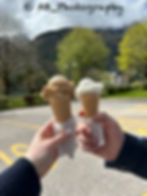
20. Panoramic Viewpoint and Parking (Punto Panoramico e Parcheggio):
Just in front of Molveno, along the SS421 road, there is a convenient parking area that offers a breathtaking panoramic view of Lake Molveno, the town of Molveno, and the surrounding Brenta Dolomites. This spot is perfect for a short break to stretch your legs, enjoy the scenery, and capture some memorable photographs. The viewpoint provides an excellent vantage point to appreciate the area's natural beauty, making it a worthwhile stop on your journey through Trentino.

21. Panoramic Viewpoint (Punto Panoramico):
As you travel along the SS421 from Molveno towards San Lorenzo Dorsino, you'll encounter a roadside viewpoint that offers a breathtaking panorama of Lake Molveno, nestled beneath the majestic Brenta Dolomites. This location provides a peaceful setting to pause, stretch your legs, and immerse yourself in the area's natural beauty. It's an ideal spot for photography enthusiasts looking to capture the serene landscape. Although there are no facilities available on-site, the tranquil ambiance and stunning views make it a worthwhile stop on your journey through Trentino.

22. Bolzano (Bozen):
-If you're arriving by car, we suggest parking at: Lauben Parking (The parking lot requires payment at the onsite machines, either by credit card or cash at the end of the parking period).
Bolzano, the capital of South Tyrol, offers a unique blend of Alpine and Mediterranean cultures. As you stroll through its medieval arcades and vibrant piazzas, you'll experience a city where Italian and German influences coexist harmoniously.
Walking along the medieval arcades of Via dei Portici, you'll find a lively mix of shops and cafes. The city's rich history is showcased in landmarks such as the Gothic Cathedral and the South Tyrol Museum of Archaeology, which is home to Ötzi the Iceman.
In addition to its cultural offerings, Bolzano serves as a gateway to outdoor adventures, providing easy access to hiking trails, vineyards, and ski resorts. Whether you're exploring its historic streets or venturing into the surrounding mountains, Bolzano offers a charming combination of urban allure and natural beauty.
23. Walther square (Piazza walter-Waltherplatz) and Monument to Walther von der Vogelweide (Monument Walther Von der Vogelweide):
At the heart of Bolzano is Piazza Walther (Waltherplatz), a vibrant square that serves as the city's main gathering place. Dominating the center is a striking marble statue of Walther von der Vogelweide, a renowned medieval poet and minstrel. Created in 1889 by sculptor Heinrich Natter, the monument honors Walther's contributions to German literature and his connection to the region.
Surrounded by charming cafés and historic buildings, the square offers a lively atmosphere where locals and visitors come together. Whether you are enjoying a coffee, attending one of the many events held here, or simply taking in the sights, Piazza Walther provides a delightful glimpse into Bolzano's rich cultural tapestry.

24. Loacker Café:
In the heart of Bolzano, on Piazza Walther, we took a break at the Loacker Café. The café features a cozy atmosphere and offers a selection of pastries, including their signature wafers. It’s a pleasant spot to relax with a coffee while observing the activity in the square.
Next to the café is the Loacker Brand Store, where you can explore an extensive range of products, including seasonal treats and gift items. This is a convenient place to pick up sweet souvenirs or indulge in your favorite Loacker specialties.
Whether you're looking for a light snack, a sweet treat, or simply a cozy place to unwind, Loacker Café provides a welcoming environment that perfectly complements the charm of Bolzano's city center.
25. Bolzano Cathedral (Duomo di Bolzano):
Located in the heart of Bolzano, next to Piazza Walther, the Bolzano Cathedral—also known as the Cathedral of the Assumption of Our Lady—is a stunning example of late Gothic architecture. Built between the 14th and 16th centuries, the cathedral features a 65-meter-high bell tower adorned with intricate stone carvings and gargoyles, reminiscent of those on Notre-Dame in Paris. The site has a rich history, having previously housed a 4th-century early Christian basilica and several Romanesque churches.
Inside, you can appreciate the beautifully crafted sandstone pulpit, the Baroque Chapel of Grace, and various late Gothic frescoes. Despite suffering damage during World War II, the cathedral has been carefully restored and continues to serve as a place of worship, reflecting Bolzano's rich historical heritage. Its central location makes it a convenient and worthwhile stop for anyone exploring the cultural treasures of South Tyrol.

26. Maretsch Castle (Castel Mareccio):
-If you're arriving by car, we suggest parking at: Parkplatz Maretsch (The parking lot requires payment at the onsite machines, either by credit card or cash at the end of the parking period).
Nestled just a short walk from Bolzano's historic center, Castel Mareccio is a tranquil retreat surrounded by vineyards and framed by the surrounding mountains. Originally built in the 13th century, the castle underwent significant renovations in Renaissance style during the 16th century under the Römer family. They added four distinctive round towers and commissioned elegant frescoes that still adorn its halls today.
Although no longer inhabited, the castle now serves as a venue for cultural events, exhibitions, and weddings. Its serene setting and historical charm make it a worthwhile stop for those exploring Bolzano. If you're in the area, consider checking for any scheduled events during your visit.

27. Talvera Talfer Promenade and Talvera park (Giardini Talvera):
-If you're arriving by car, we suggest parking at: Parkplatz Maretsch (The parking lot requires payment at the onsite machines, either by credit card or cash at the end of the parking period).
The Talvera Talfer Promenade and the adjacent Talvera Park and Meadows create a lush green corridor through Bolzano, providing a peaceful escape from the city's hustle and bustle. This area is popular with both locals and visitors for leisurely walks, cycling, and picnics. The promenade is lined with trees and offers scenic views of the surrounding mountains. The Talvera Park and Meadows consist of expansive lawns that border the Talvera River. They feature multiple playgrounds, sports fields, a skate park, and a mini-golf course, making it a favorite destination for families. The open spaces and shaded paths create a relaxing environment for various recreational activities.
One of the highlights along the promenade is the picturesque view of Castel Mareccio, a 13th-century castle nestled among vineyards. This vantage point is perfect for photographers who wish to capture the castle's historic charm against the backdrop of the vineyards and mountains. Whether you’re interested in outdoor activities, family-friendly amenities, or simply enjoying the natural beauty of Bolzano, the Talvera Talfer Promenade and Meadows offer a delightful setting for everyone.

28. Experience the Dolomites Without the Drive: A Perfect Day Trip from Bolzano:
Embark on an enchanting journey through the breathtaking heart of the Dolomites with the exclusive Private Tour by Car from Bolzano. This full-day adventure invites you to traverse the famous Great Dolomites Roads, where you'll be mesmerized by iconic sights, including the shimmering emerald waters of Lake Carezza and the picturesque Lake Braies, the majestic peaks of the Sella Group, the stunning Pordoi Pass, the picturesque town of Cortina d’Ampezzo, and the serene Lake Misurina. Each stop promises awe-inspiring views and endless photo opportunities, offering a rich and immersive experience of the Dolomites’ unparalleled natural beauty.
Accompanied by a knowledgeable English/Italian-speaking driver-guide, you’ll benefit from insightful commentary and the unique flexibility to tailor stops to suit your group’s interests. All transportation costs, including tolls and parking, are seamlessly covered, and you will be provided with refreshing bottled water for your comfort.
This tour is the perfect choice for those who wish to avoid the challenging alpine routes or maximize their experience during a limited stay in this stunning region. To guarantee your spot, especially during peak seasons, we highly recommend booking in advance through Viator, a trusted website for guided tours.
For more details and to secure your unforgettable experience, visit the official Viator page by clicking here or using the link below:
29. Lana:
-If you're arriving by car, we suggest parking at: Parkplatz (Via Arciduca Eugenio, 39011 Lana BZ, Italy).
Nestled between Bolzano and Merano in the Adige (Etschtal) Valley, Lana is a charming town that seamlessly blends Alpine and Mediterranean influences. Known as South Tyrol's largest fruit-growing area, its landscape features picturesque apple orchards and vineyards, providing stunning views throughout the seasons. Lana is rich in cultural heritage, evident in its many churches and historical sites. A highlight is the Schnatterpeck Altar located in the Church of Maria Himmelfahrt, which is one of Europe's largest winged altars and showcases intricate craftsmanship from the late Gothic period.
For nature enthusiasts, Lana serves as a gateway to various hiking and biking trails, including routes that lead to the serene Ulten Valley. The nearby Vigiljoch mountain offers panoramic views and is accessible via a historic cable car. With its combination of natural beauty, cultural landmarks, and outdoor activities, Lana is a delightful destination for travelers exploring South Tyrol.

30. Café Eisdiele Sader:
In the heart of Lana, we enjoyed a delicious local gelato at Café Eisdiele Sader. This family-run café has been serving locals and visitors since 1975. It offers a cozy atmosphere, featuring a selection of homemade pastries and, of course, their signature gelato. It’s a lovely spot to relax with a coffee while watching the town's activities. Whether you're in the mood for a light snack, a sweet treat, or simply a place to unwind, Café Eisdiele Sader provides a welcoming environment that perfectly complements the charm of Lana's center.
31. The Holy Cross Church (Heilig Kreuzkirche):
In the center of Lana, the Holy Cross Church (Heilig Kreuzkirche) is a significant landmark in the town. Constructed between 1938 and 1950, the church was designed by Stuttgart architect Otto Lindner in the style of an early Christian basilica. Its interior is characterized by simplicity, featuring high, narrow stained-glass windows and a monumental crucifix above the altar. The church's tower rises to a height of 57 meters and is topped with a spherical roof, affectionately nicknamed the "Lana Apple" by locals. Notably, it houses South Tyrol's largest church bell, weighing over 6,200 kilograms, which resonates during special occasions. Whether you're interested in architecture, history, or simply exploring local landmarks, Heilig Kreuzkirche offers a glimpse into Lana's cultural and spiritual heritage.

32. Holy Cross Monastery Church (Klosterkirche Heilig Kreuz):
The Holy Cross Monastery Church (Klosterkirche Heilig Kreuz) is a peaceful religious site situated in the picturesque surroundings of the town. This church is part of the Lanegg Monastery complex, which is historically associated with the Teutonic Order. The monastery underwent revitalization in 1841 and saw expansions in the early 20th century. The church itself, built in the early 1900s, features a blend of architectural styles and is home to artworks by the renowned Grödner artist Josef Obletter. Its tranquil setting and historical significance make it a noteworthy destination for those exploring the spiritual and cultural heritage of South Tyrol.
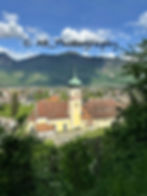
33. Parish Church of the Assumption (Pfarrkirche "Maria Himmelfahrt"):
-If you're arriving by car, we suggest parking at: Parcheggio Pubblico (Via Schnatterpeck, 14, 39011 Lana BZ, Italy).
Nestled in the peaceful district of Niederlana, the Pfarrkirche Maria Himmelfahrt (Parish Church of the Assumption) is a stunning example of late Gothic architecture. While the outside is modest, the interior unveils the impressive Schnatterpeck Altar—a remarkable 14-meter-tall masterpiece carved from chestnut wood between 1503 and 1511. This altar, considered the largest of its kind in the Alps, features 33 intricately detailed figures and painted panels created by Hans Schäufelein, a pupil of Dürer.
The church was consecrated in 1492 and built on the foundations of an earlier Romanesque structure. With its tall, slender bell tower and serene interior, it offers a peaceful stop for those exploring Lana’s cultural heritage. Access to the Schnatterpeck Altar is available only through guided tours, which are offered seasonally. If you're in the area and appreciate art or history, this church is definitely worth a visit.

34. Brandis Waalweg/Waterfall Trail (Inizio Sentiero della Roggia di Brandis) and Brandis Waterfall (Brandis Wasserfall):
-If you're arriving by car, we suggest parking at: P4 Parcheggio (Via delle Palade, 11, 39011 Lana BZ, Italy) (The parking lot requires payment at the onsite machines, either by credit card or cash/ EasyPark app).
If you're searching for a peaceful and scenic walk in Lana, the Brandis Waalweg Trail is a delightful choice. Starting near the P4 parking area on Via delle Palade, this approximately 6 km (3.7 miles) out-and-back trail takes about 1 hour and 40 minutes to complete (depending on your pace). The path winds through orchards, vineyards, and chestnut groves, providing a serene environment that is mostly shaded by trees, making it comfortable even on warmer days.
At the end of the trail, you'll find the picturesque Brandis Waterfall, which stands about 60 meters (197 feet) tall, nestled within a lush gorge. The waterfall cascades gracefully over a rocky cliff, creating a soothing ambiance and offering excellent opportunities for photography. The combination of natural beauty and tranquility makes this spot a highlight of the hike.
Along the trail, there are numerous picturesque spots perfect for photography or simply enjoying the natural surroundings Adige (Etschtal) valley. The waterfall marks the turnaround point of the hike, after which you retrace your steps back to the starting point. Whether you're looking for a leisurely stroll or a chance to immerse yourself in nature, the Brandis Waalweg Trail and its waterfall provide a refreshing escape in the heart of South Tyrol.
For easy trail navigation, even offline, we recommend using AllTrails to plan your hike. Download the map before you go to stay on track without worrying about signal loss. Click here to access the trail map and details, ensuring you’re guided every step of the way.
35. Santa Margherita Church (Chiesa di Santa Margherita):
Along the Brandis Waalweg/Waterfall Trail, the Church of Santa Margherita stands as a serene example of early Romanesque architecture. Dating back to the late 10th century, this modest tri-apsidal church boasts frescoes from 1215, which include depictions of Christ Pantocrator and symbolic bestiaries. Perched on a gentle slope, the church offers tranquil views of the Adige (Etschtal) Valley, making it a perfect spot to pause during your hike. Its unassuming presence among orchards and vineyards adds historical charm to the natural beauty of the trail.
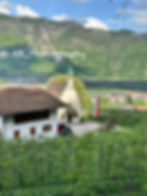
36. Castel Lebenberg (Castel Lebenberg):
-If you're arriving by car, we suggest parking at: Parkplatz Schloss Lebenberg (very limited space).
Perched above the village of Cermes, Castel Lebenberg is a remarkably preserved 13th-century castle that provides a fascinating journey through centuries of South Tyrolean history. Inside, you can explore a stunning Rococo Hall of Mirrors adorned with Venetian glass, a 14th-century three-story chapel featuring beautiful Gothic frescoes, and a hall of knights that showcases a 12-generation family tree of the Fuchs von Fuchsberg lineage.
The castle's interiors are furnished with period pieces that range from Gothic to Empire styles, including a unique 18th-century foldaway bed. Surrounded by terraced vineyards and a French-style flower garden, the castle offers panoramic views over the Adige (Etschtal) Valley. It's a photographer's dream, especially in autumn when the vineyards burst with vibrant colors.
Tip: The best photography spot for capturing the castle is located on the road before the castle at coordinates 46°38'11.9"N 11°08'05.4"E.
Getting There: To reach Castel Lebenberg by car, you will need to navigate a narrow, winding road through picturesque vineyards. Parking is very limited near the castle, so it is advisable to arrive early or consider alternative transportation, such as walking. Whether you are a history enthusiast, an architecture lover, or simply searching for a scenic spot, Castel Lebenberg offers a rich and rewarding experience.

--------------
37. Trostburg Castle (Castel Forte/Trostburg):
Perched dramatically above the village of Ponte Gardena, Trostburg Castle is one of South Tyrol’s most captivating medieval fortresses. First mentioned in 1173, it served as the ancestral home of the noble Wolkenstein family for over 600 years and was the childhood residence of the renowned poet and composer Oswald von Wolkenstein. Today, the castle is home to the South Tyrolean Castles Museum, which features an impressive collection of scale models of regional castles and exhibits that highlight medieval life.
On site, you can explore richly decorated rooms, including a Gothic parlor with a triple-vaulted ceiling and a Renaissance Knights’ Hall adorned with heraldic motifs. Access to Trostburg is via a steep, cobbled path from Waidbruck, which takes about 15–20 minutes on foot. Guided tours in German, Italian, and English can be arranged in advance.

38. Siusi allo Sciliar (Seis am Schlern):
-If you're arriving by car, we suggest parking at: Parcheggio at Via Laurino, 6-8, 39040 Siusi BZ, Italy (The parking lot requires payment using EasyPark app).
Siusi allo Sciliar, known as Seis am Schlern in German, is a charming alpine village located at the base of the Schlern massif in South Tyrol. It serves as a gateway to the expansive Alpe di Siusi (Seiser Alm), which is Europe's largest high-altitude meadow. Siusi offers a delightful combination of natural beauty and cultural richness.
The village is well-known for its picturesque landscapes, featuring rolling meadows and stunning panoramic views of the Dolomites. The Alpe di Siusi Aerial Cableway, situated in Siusi, provides convenient access to the plateau, making it a popular starting point for hikers and nature enthusiasts. Additionally, the area boasts South Tyrol's most beautiful 18-hole golf course, offering a unique experience for golf lovers.
Siusi's blend of Italian and Austrian influences is reflected in its architecture, cuisine, and traditions, creating a distinctive cultural experience. Whether you are seeking outdoor adventures or a peaceful retreat, Siusi allo Sciliar is a destination that truly captures the essence of the Dolomites.
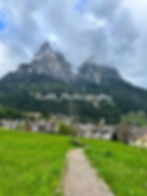
39. Mary Help of Christians Church (Chiesa di Maria Ausiliatrice):
Located in the heart of Siusi allo Sciliar, the Mary Help of Christians Church is a tranquil 17th-century sanctuary. Consecrated in 1657, this Baroque-style church features a distinctive steeple adorned with red tiles, along with Gothic elements such as twin round-arched windows and four gargoyles. Inside, you will find the 14 Stations of the Cross framed with the Arma Christi, and a pulpit canopy depicting Archangel Michael. Originally serving as the village's main parish church, it became a popular pilgrimage site, particularly in May when it is dedicated to the Virgin Mary.
Even after the larger Holy Cross Parish Church was built in 1937, the Mary Help of Christians Church continues to be a cherished place of worship and reflection. Easily accessible from Oswald von Wolkenstein Square, this quaint church invites visitors to pause and appreciate its historical and spiritual significance against the stunning backdrop of the Dolomites.

40. St. Valentin Church (Chiesa di San Valentino):
-If you're arriving by car, we suggest parking at: Parcheggio at Via Laurino, 6-8, 39040 Siusi BZ, Italy (The parking lot requires payment using EasyPark app).
Perched on a gentle hill above Siusi allo Sciliar, the 13th-century St. Valentin Church is a hidden gem that rewards those willing to embark on a short but steep 15-minute hike along the Sentiero per Chiesa di San Valentino. The trail winds uphill through lush meadows and past charming farmhouses, providing increasingly breathtaking views of the surrounding landscape.
The church itself is a modest yet striking structure, featuring a distinctive onion-domed steeple and adorned with frescoes from the 14th and 15th centuries. Notably, one fresco depicting the Adoration of the Magi includes a backdrop of the local landscape, beautifully integrating the sacred with the familiar.
From its vantage point, you are treated to panoramic vistas of the Alpe di Siusi and the imposing Sciliar massif. The blend of historical significance, artistic detail, and natural beauty makes St. Valentin Church a worthwhile stop for anyone exploring the Dolomites.
Practical Information:
Access: The church is reachable via a 15-minute uphill walk from Siusi along the Sentiero per Chiesa di San Valentino.
Opening Hours: The church is generally closed to the public, but guided tours are available from the end of June to the beginning of September.
Contact: For tour bookings, contact the Tourist Office Seis am Schlern at +39 0471 707024 or by email: info@seis.it.
Whether you're a history enthusiast, an art lover, or a nature seeker, a visit to St. Valentin Church offers a serene and enriching experience in the heart of South Tyrol.
---------------
41. Church of St. John in Ranui (Chiesetta di San Giovanni in Ranui):
-If you're arriving by car, we suggest parking at: limited parking near Hotel Ranuimüllerhof OR at the Parkplatz (Ranui, 39040 St. Maddalena, Autonome Provinz Bozen - Südtirol, Italy) (The parking lot requires payment at the onsite machines, either by credit card or cash).
Situated in the lush meadows of Val di Funes, the Church of St. John in Ranui is a charming Baroque chapel that has become a symbol of South Tyrol's alpine beauty. Built in 1744 by Joseph Anton von Jenner, this modest church is dedicated to Saint John of Nepomuk, a Bohemian martyr who was canonized in 1729. The chapel features a distinctive onion-domed bell tower and a richly decorated façade, which provide a striking contrast to the rugged peaks of the Odle Group that rise dramatically behind it.
To access the church grounds and capture the iconic views up close, you are required to pay a €4 entrance fee, which can be paid in cash at an automatic ticket machine at the gate. Alternatively, the exterior can be viewed from a nearby path, offering one of the most iconic photographic opportunities in the Dolomites. While the church is stunning up close, the best view is from the outside. Therefore, entering the grounds is not necessary, but is recommended if you wish to inspect the small details. To help preserve the pristine landscape, it is kindly requested to stay on designated trails and respect the surrounding meadows.
For those looking to capture the quintessential image of South Tyrol's harmonious blend of natural beauty and cultural heritage, the Church of St. John in Ranui is a must-visit destination.

42. Viewpoint of St. John Church:
-If you're arriving by car, we suggest parking at: limited parking near Hotel Ranuimüllerhof OR at the Parkplatz (Ranui, 39040 St. Maddalena, Autonome Provinz Bozen - Südtirol, Italy) (The parking lot requires payment at the onsite machines, either by credit card or cash).
Just a short walk from the parking areas in Ranui, the official viewpoint for the Church of St. John offers the perfect postcard shot: the charming Baroque chapel set against the dramatic spires of the Odle Group. This designated observation deck is located along the roadside and provides an unobstructed view of the church nestled in the lush meadows of Val di Funes. Although the platform is quite narrow, it can accommodate several people and is a popular spot, especially during the golden hour. Thanks to the high fence, it's the best place to capture the iconic photo of the church. For those seeking a different perspective, a short uphill hike leads to an upper viewpoint, offering a panoramic vista of the church with the majestic valley in the background. The viewpoint itself is freely accessible and provides one of the most iconic and serene scenes in the Dolomites.

43. Funes Adventure Park (Parco Avventura Funes):
-If you're arriving by car, we suggest parking at: near Waldschenke (46°38'01.3"N 11°43'43.4"E) (The parking lot requires payment at the onsite machines, either by credit card or cash).
Nestled in the lush forests of Val di Funes, just a short distance from St. John Church, Funes Adventure Park offers an exhilarating experience for families and thrill-seekers alike. The park features 12 aerial courses with approximately 120 elements, including suspension bridges, wobbly platforms, and zip lines, catering to various skill levels and ages. Safety is a top priority; you receive helmets and harnesses and must undergo a mandatory training session to familiarize yourself with the equipment and safety procedures. For those seeking an extra challenge, there is a 14-meter-high climbing tower with routes of varying difficulty levels.
Set against the breathtaking backdrop of the Odle/Geisler peaks within Puez-Odle Nature Park, the adventure park not only offers adrenaline-pumping activities but also stunning natural scenery. After an active day, families can relax and enjoy a meal at the on-site barbecue area. Whether you're an adventure enthusiast or a family looking for a fun day out, Funes Adventure Park combines excitement with the unparalleled beauty of the Dolomites.
44. Santa Magdalena (St. Magdalena):
-If you're arriving by car, we suggest parking at: Parkplatz Bergerplatz (S. Maddalena, 102A2, 39040 Santa Magdalena BZ, Italy) (The parking lot requires payment at the onsite machines, either by credit card or cash).
Nestled at the end of Val di Funes, the village of St. Magdalena (Santa Magdalena/Maddalena) is a tranquil alpine retreat that looks like it's straight out of a postcard. Its iconic church, situated on a gentle slope, is framed by the stunning peaks of the Odle/Geisler group, creating one of the most photographed scenes in the Dolomites.
Beyond its picturesque charm, St. Magdalena offers a peaceful atmosphere with traditional Tyrolean architecture. The village serves as a gateway to a variety of hiking trails, including the Panoramaweg and Sunnseitnweg, which wind through meadows and forests, providing breathtaking views of the valley and mountains.
Whether you're a passionate photographer in search of the perfect light or a traveler looking to find solace in nature, St. Magdalena promises an unforgettable experience that captures the essence of South Tyrol's beauty.
45. Santa Magdalena Panorama Trail:
The Santa Magdalena Panorama Trail is a delightful 9.5 km (approximately 5.9 miles) circular hike that begins and ends in the charming village of Santa Magdalena in Val di Funes. With an elevation gain and loss of 380 meters, this trail is considered easy and typically takes around 3 hours and 30 minutes to complete (depending on your pace). We chose to cut our hike short and returned after the third viewing point (so we did only about 4 km (2.4 miles)).
The route winds through lush meadows, serene forests, and past traditional Tyrolean farmsteads, offering hikers panoramic views of the Odle/Geisler peaks and the picturesque Santa Magdalena Church. The trail is best hiked between May and October when the weather conditions are favorable.
Along the way, you will encounter notable landmarks such as Vikolerhof, Runggatschhof, Gsoihof, and Austillerhof, each providing unique insights into the region's rich cultural heritage. The path is well-marked and well-maintained, making it accessible for hikers of all levels. This trail is not only a visual delight but also a journey through the heart of South Tyrol's enchanting landscape, making it a must-do for anyone visiting the Dolomites.
For easy trail navigation, even offline, we recommend using AllTrails to plan your hike. Download the map before you go to stay on track without worrying about signal loss. Click here to access the trail map and details, ensuring you’re guided every step of the way.

46. Santa Magdalena First Viewpoint (Villnöß):
Located in the heart of Val di Funes (Villnöß), the Santa Magdalena First Viewpoint offers one of the most iconic vistas in the Dolomites.
Situated along the Santa Magdalena Panorama Trail, just before the Church of Santa Magdalena, it showcases rolling alpine meadows and the dramatic spires of the Odle/Geisler peaks.
The viewpoint is particularly stunning during golden hour, as the setting sun bathes the landscape in warm hues.
Whether you’re a seasoned photographer or a casual traveler, the Santa Magdalena First Viewpoint is a must-visit for experiencing the breathtaking beauty of South Tyrol’s alpine scenery.
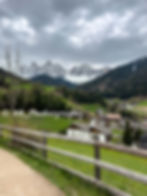
47. Santa Magdalena Church (Chiesa di Santa Maddalena):
Perched gracefully above the village of Santa Magdalena in Val di Funes, this 14th-century church is a quintessential symbol of the Dolomites' charm. Its modest Gothic architecture stands in striking contrast to the dramatic spires of the Odle/Geisler peaks towering behind it, creating a captivating scene for photographers and travelers alike.
Accessible via the Santa Magdalena Panorama Trail, the church not only provides spiritual solace but also offers a front-row seat to one of nature's most breathtaking displays. Whether illuminated by the golden hues of sunset or the soft light of dawn, the view here is truly iconic.
48. Santa Magdalena Second Viewpoint (Panorama Sitzbank):
For a more intimate and serene view of Val di Funes, the second viewpoint along the Santa Magdalena Panorama Trail is a perfect stop during the hike and provides a captivating alternative to the iconic first viewpoint.
Positioned slightly higher in the valley, this location offers a unique perspective of the Santa Magdalena Church, which is nestled among lush meadows, with the majestic Odle/Geisler peaks rising dramatically in the background.
Whether you are an avid photographer or simply someone who appreciates breathtaking landscapes, the second viewpoint delivers a peaceful and rewarding experience. It showcases the harmonious blend of natural beauty and cultural heritage that defines the Dolomites.
---------------
49. Rabanser:
Located in Ortisei, Rabanser Wine & Beverages is a must-visit for wine lovers and casual drinkers alike. With over 1,700 wines, champagnes, and spirits, it showcases the rich viticultural heritage of South Tyrol.
The enoteca's charming architectural details and painted facades enhance its inviting atmosphere. Whether you're after a rare vintage, local grappa, or just want to explore, Rabanser offers a delightful experience.

50. Ortisei (Urtijëi):
-If you're arriving by car, we suggest parking at: Parkplatz Pana (The parking lot requires payment at the onsite machines, either by credit card or cash/ EasyPark app).
Ortisei is the largest and most vibrant village in Val Gardena, offering a wide range of hotels, bars, shops, and restaurants. Its convenient location and charming pedestrian center make Ortisei a popular destination for both summer and winter holidays in the Dolomites. The village is surrounded by stunning high plateaus and iconic mountains, including Alpe di Siusi (Seiser Alm), Seceda, and the Resciesa Plateau (Raschötz), all of which can be easily accessed by cable cars or funiculars.
Furthermore, Ortisei is famous for its rich tradition of woodcarving, with local artisans creating beautiful sculptures that showcase the area's cultural heritage. Whether you're exploring the lively town center, taking in the breathtaking mountain views, or immersing yourself in local crafts, Ortisei offers a quintessential Dolomites experience that combines natural beauty with cultural charm.

51. St. Ulrich Parish Church (Chiesa san Ulrico):
Located in the heart of Ortisei, the St. Ulrich Parish Church showcases the town's rich cultural and artistic heritage. Constructed between 1792 and 1796, the church features a Neoclassical style infused with Baroque elements.
It is designed in a Latin cross layout, with a central nave and two side chapels dedicated to the Sacred Heart of Jesus and Our Lady of the Rosary.
The interior features various artworks, including local wooden sculptures by Ludwig Moroder and Josef Moroder-Lusenberg, along with notable pieces like the statue of Saint Ulrich and the altar painting "Adoration of the Magi."
The church's prominent Baroque spire adds a distinctive touch to Ortisei's skyline, making it a must-visit destination for those interested in unique views, art, architecture, and history.
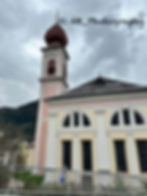
52. St. Jacob’s -San Giacomo Church (Chiesa di San Giacomo) & Via del Dialogo:
Embark on a serene and culturally enriching hike to St. Jacob’s-San Giacomo Church (Chiesa di San Giacomo), the oldest church in Val Gardena, which dates back to 1181. To reach the church—accessible only by hiking—begin your journey at the St. Ulrich Parish Church in Ortisei. Follow the "Via del Dialogo" trail, which is adorned with inscribed stones and art installations that inspire reflection.
As you continue past the Adventure Park & Fly Line "Emozion Col de Flam" fork, the trail becomes more challenging, winding through tranquil shaded woodlands toward the historic St. Jacob’s Church.
The round-trip hike covers about 6 km (3.7 miles) with an elevation gain of approximately 320 meters (1,050 feet), typically taking around 2.5 to 3 hours to complete (depending on your pace).
While the trail is considered moderate, those not accustomed to hiking may find the incline difficult. However, the effort is rewarded with breathtaking vistas and a glimpse into the region's rich history.
Upon reaching the 12th-century St. Jacob’s Church, perched at approximately 1,500 meters (4,920 feet) above sea level, you will be treated to panoramic views of the Val Gardena valley, as well as the Sassolungo and Sassopiatto peaks.
For the return journey, you can retrace your steps along path no. 6 or descend toward the village of San Giacomo via the Luis Trenker path (trail no. 6B) back to Ortisei, passing the Grohmann monument along the way.
The trail is best enjoyed from late spring (May) to early autumn (October) when the weather is favorable and the path is clear. Be sure to wear sturdy footwear, carry water, and consider bringing a snack to enjoy at one of the scenic rest spots along the way. This hike offers a harmonious blend of natural beauty, cultural heritage, and spiritual tranquility.
For easy trail navigation, even offline, we recommend using AllTrails to plan your hike. Download the map before you go to stay on track without worrying about signal loss. Click here to access the trail map and details, ensuring you’re guided every step of the way.

53. Luis Trenker Promenade (Passeggiata Luis Trenker) & Park (Parco giochi):
The Luis Trenker Promenade in Ortisei is a scenic, gently sloping path that provides panoramic views of the town and the surrounding Dolomite peaks. Named after the famous South Tyrolean mountaineer and filmmaker Luis Trenker, this trail is popular among walkers, joggers, and cyclists due to its accessibility and beautiful setting.
Along the promenade, the Luis Trenker Playground offers families a well-designed play area equipped with wooden structures, slides, climbing frames, and swings. With Ortisei's charming architecture and the majestic mountains as a backdrop, the playground is a delightful spot for children to play while adults can relax and enjoy the views.
Whether you're looking for a leisurely stroll, a family-friendly outing, or simply a place to appreciate the natural beauty of Val Gardena, the Luis Trenker Promenade provides a perfect blend of recreation and relaxation.
54. "Children’s Fountain" (Bambini della Fontana) & Sant’Antonio Square:
In the heart of Ortisei, the "Children’s Fountain" (Fontana dei Bambini) is located in Sant’Antonio Square, right in front of the charming Sant’Antonio Chapel. This bronze sculpture features playful children gathered around a central column decorated with vibrant flowers, adding a whimsical touch to the town's central gathering place.
Surrounded by pastel-colored buildings and lively cafés, the square provides a picturesque setting to relax and enjoy the alpine atmosphere. Whether you take a moment for a coffee or capture photos, this spot perfectly embodies the quaint charm of Ortisei.

55. St. Anthony’s Church (Chiesa di Sant’Antonio):
Located in the heart of Ortisei's main square, St. Anthony’s Church is a Renaissance masterpiece that dates back to 1673. Its elegant simplicity and striking 29-meter onion-domed bell tower make it a beloved landmark and a favorite spot for photographers. Inside, the church features notable artworks, including a 19th-century altar painting by Swiss artist Melchior Paul von Deschwanden, as well as statues created by local sculptor Johannes Vinatzer. The interior is further enhanced by 17th-century oil paintings that depict scenes from the life of St. Anthony.
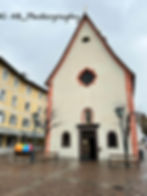
---------------
56. Santa Cristina Valgardena:
Santa Cristina is a charming alpine village nestled in the heart of Val Gardena at an elevation of 1,428 meters. It offers a perfect blend of natural beauty, cultural heritage, and outdoor adventure, making it an ideal base for exploring the Dolomites year-round.
In winter, Santa Cristina provides direct access to the renowned Dolomiti Superski area, which includes the famous Saslong World Cup downhill run. The Gardena Ronda Express funicular effortlessly connects skiers to the broader Sella Ronda circuit, making it a favorite destination for winter sports enthusiasts.
During the summer, the village transforms into a haven for hikers and mountain bikers, with trails leading to scenic spots like Col Raiser and Monte Pana. Families will appreciate the tranquil atmosphere, pedestrian-friendly center, and attractions such as the world's largest nativity scene located at the Iman leisure center (Centro Sportivo Iman).
With its rich Ladin traditions, picturesque landscapes, and ample recreational opportunities, Santa Cristina is a delightful destination for travelers seeking both relaxation and adventure in the Dolomites.

57. "Wooden Head" Viewpoint (Testa di legno):
Located along the SS242 road at the entrance to Santa Cristina Val Gardena, the "Wooden Head" Viewpoint (Testa di Legno) is a charming roadside stop that offers panoramic views of the village and the surrounding peaks of the Dolomites.
This viewpoint reflects the region's rich tradition of woodcarving, a craft that has flourished in Val Gardena since the 17th century. It is an accessible spot, perfect for travelers looking for a quick yet memorable photo opportunity amidst the stunning alpine landscape.
58. Selva di Val Gardena:
-If you're arriving by car, we suggest parking at: Parcheggio sotterraneo Selva di Val Gardena BZ (The parking lot requires payment at the onsite machines at the end of the parking period, either by credit card or cash).
Selva di Val Gardena, perched at an altitude of 1,563 meters above sea level, is the highest village in Val Gardena. It offers a perfect blend of alpine charm and modern amenities, nestled between the majestic Sella and Sassolungo massifs, making it a prime gateway to the stunning landscapes of the Dolomites.
In the winter, Selva transforms into a skier's paradise, providing direct access to the famous Sella Ronda circuit and over 500 kilometers of interconnected slopes within the Dolomiti Superski area. During the summer, it becomes a haven for hikers and mountain bikers, with trails that lead to breathtaking vistas and picturesque alpine meadows.
Beyond its natural beauty, Selva is rich in Ladin culture, which is reflected in its architecture, cuisine, and traditions. Whether you’re looking for adventure or relaxation, Selva di Val Gardena offers an authentic Dolomite experience throughout the year.
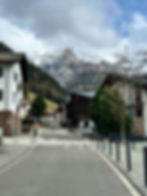
59. St. Mary's Parish Church (Pfarrei Maria Himmelfahrt):
In the heart of Selva di Val Gardena, St. Mary's Parish Church is a beautiful blend of historical significance and modern design.
Originally established in 1503 by Wilhelm von Wolkenstein, the church has gone through several transformations to meet the needs of the growing community.
The most significant renovation took place in 1988, when the 19th-century neo-Gothic nave was replaced with a modern octagonal structure. Despite these changes, the 17th-century chancel has been carefully preserved and features a replica of the Madonna with Child painting by Lucas Cranach the Younger.
This sacred space serves not only as a place of worship but also as a reflection of the rich cultural heritage of the Ladin-speaking community in the Dolomites.

---------------
60. Gardena Pass Parking & Viewpoint (46°32'15.9"N 11°46'34.1"E):
Located along the scenic SS243 road near Selva di Val Gardena, the Gardena Pass parking area is a convenient spot to pause and take in the breathtaking views of the Dolomites. This viewpoint offers panoramic vistas of the surrounding peaks, making it a favorite destination for photographers and nature enthusiasts.
Whether you're capturing the golden hues of sunrise or the tranquil beauty of sunset, this location provides a stunning backdrop. Additionally, it serves as an ideal rest stop for those navigating the winding mountain roads, allowing for a moment of relaxation amidst the alpine splendor.
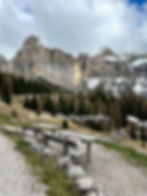
61. Sella del Culac Viewpoint:
Located along the scenic SS243 mountain road, Sella del Culac is a hidden gem that offers panoramic views of the rugged peaks and winding valleys of the Dolomites. This roadside pull-off is a convenient spot to pause, stretch your legs, and capture stunning photographs of the surrounding alpine landscape.
Whether you're looking for a brief respite during your drive or hoping to take the perfect shot of the majestic mountains, Sella del Culac provides an unforgettable experience amidst nature's grandeur.

62. Sella Pass (Passo Sella):
Sella Pass, standing at 2,218 meters (7,277 feet), is a stunning mountain pass located in the Dolomites, connecting Val Gardena and Val di Fassa. It is a highlight of the famous Sellaronda circuit and offers breathtaking panoramic views of the Sella and Sassolungo massifs.
The pass can be accessed without any toll fees, making it a popular route for drivers, cyclists, and hikers alike. However, while the road is free to use, parking at the pass is limited and regulated. It is advisable to park in designated areas and to avoid roadside parking in order to protect the region's natural beauty.
In our Google Map, we have marked a specific viewpoint along the pass that provides an exceptional panorama—perfect for a brief stop to capture the stunning alpine scenery.
63. Canazei:
-If you're arriving by car, we suggest parking at: Parcheggio Via Roma.
Canazei, located at an altitude of 1,465 meters (4,806 feet) in Val di Fassa, is a charming alpine village surrounded by the stunning peaks of the Marmolada, Sella, and Sassolungo mountain ranges. It is known as a top destination for outdoor enthusiasts, offering a wide range of activities throughout the year. In the winter, visitors can enjoy skiing in the expansive Dolomiti Superski area, while in the summer, the village provides excellent opportunities for hiking and mountain biking.
Canazei's Ladin heritage is reflected in its traditional architecture and vibrant cultural events, offering an authentic glimpse into the region's rich history and natural beauty.
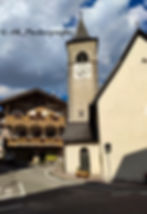
64. QC Terme Dolomiti:
-If you're arriving by car, we suggest parking at: Parcheggio terme.

Discover an extraordinary spa experience at QC Terme Dolomiti, nestled in the enchanting Val di Fassa and surrounded by the majestic Dolomite mountains. Spanning over 4,000 square meters across three levels, this luxurious wellness sanctuary offers an impressive array of indoor and outdoor thermal pools, saunas, steam rooms, and serene relaxation areas. Immerse yourself in the natural sulphurous waters of the renowned Alloch spring, celebrated for their exceptional therapeutic benefits.
Elevate your visit with signature offerings such as the rejuvenating “Forest Bathing” outdoor areas and vibrant chromatic pools. Don’t miss the enchanting “Aperiterme” evening ritual, featuring delightful light refreshments served from 5:00 PM to 7:30 PM, creating a perfect blend of relaxation and culinary pleasure. To enhance your wellness journey, consider indulging in the “Wellness Lunch” or “Wellness Break.”
Given its popularity, particularly during peak seasons, we strongly recommend booking your tickets in advance and arriving early for the ultimate experience. Whether you seek a peaceful retreat or a revitalizing escape, QC Terme Dolomiti guarantees an unforgettable getaway in the stunning heart of the Italian Alps. Entrance tickets can be purchased ahead from "Tiqets" an excellent and very popular website among worldwide travelers, using the link below:
65. Lake Karersee (Lago di Carezza):
-If you're arriving by car, we suggest parking at: P1 Parking Lake Carezza (The parking lot requires payment at the onsite machines at the end of the parking period, either by credit card or cash).
Lake Carezza, located 1,520 meters above sea level in the Dolomites of South Tyrol, is famous for its vibrant emerald waters and the stunning reflections of the Latemar mountain range. Often referred to as the "Rainbow Lake" due to its enchanting colors, it has inspired local legends and captivated visitors for generations.
A well-maintained circular trail, approximately 1.6 km (1 mile) long, encircles the lake and offers an easy 20–30 minute walk suitable for all ages. Along this path, numerous vantage points provide excellent opportunities for photography, allowing you to capture the lake's beauty from various angles.
To access Lake Carezza, you can drive along the scenic route known as the Great Dolomites Road (SS241). While this route offers breathtaking views, you should be prepared for winding mountain roads that require careful navigation. Upon arrival, there is a spacious parking area, with a short tunnel leading directly to the lake's viewing platform.
For easy trail navigation, even offline, we recommend using AllTrails to plan your hike. Download the map before you go to stay on track without worrying about signal loss. Click here to access the trail map and details, ensuring you’re guided every step of the way.
Whether you're seeking a peaceful nature walk or a picturesque spot to relax, Lake Carezza provides a serene escape in the midst of the magnificent Dolomite landscape.
66. Lake Carezza Suspension Bridge (Hängebrücke Karer See):
Just a few steps from the P1 parking area at Lake Carezza, the Lake Carezza Suspension Bridge (Hängebrücke Karer See) offers a unique viewpoint of the surrounding alpine landscape. Spanning 58 meters in length and reaching a height of 18 meters, this pedestrian bridge connects various hiking trails around the lake, enhancing accessibility and providing panoramic views of the dense forests and majestic peaks beyond. Whether you're taking a leisurely walk or looking for the perfect photo opportunity, this bridge adds an extra touch of adventure to your visit.

67. Belvedere Viewpoint (46°26'36.8"N 12°00'06.5"E):
-If you're arriving by car, we suggest parking at: Belvedere grill-bar (46°26'39.6"N 12°00'03.7"E).
Nestled along the picturesque SP251 road, the Belvedere Viewpoint offers travelers a breathtaking view of the surrounding valleys and mountains, including the impressive Civetta massif and the lush Val Fiorentina valley. This easily accessible location is ideal for a restful break during your journey, providing plenty of opportunities for photography and reflection amidst the stunning alpine scenery.
Next to the viewpoint, the Belvedere Grill Bar allows you to enjoy local cuisine while taking in the beautiful surroundings. Whether you're looking for a moment of tranquility or a stunning backdrop for your travel memories, the Belvedere Viewpoint is a must-visit destination in the heart of the Dolomites.
68. Lake Alleghe (Lago di Alleghe):
Lake Alleghe, located in the Province of Belluno, is a peaceful alpine lake that was formed in 1771 after a massive landslide from Monte Piz blocked the Cordevole stream. The lake stretches approximately 2 kilometers in length and nearly 500 meters in width, providing a tranquil setting surrounded by the majestic peaks of the mountains.
You can enjoy a leisurely walk along a well-maintained path that encircles the lake, which takes about an hour to complete. The area is popular for a variety of recreational activities, including rowing, pedal boating, and fishing during the summer months. In winter, the frozen surface of the lake becomes a venue for ice skating and ice hockey.
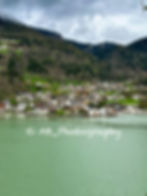
69. Lakeside Park – Alleghe (Campo giochi):
Nestled along the picturesque shores of Lake Alleghe, the lakeside park offers a delightful retreat for families and travelers seeking relaxation and natural beauty.
This charming spot provides panoramic views of the emerald waters and the towering Monte Civetta, making it an ideal location for leisurely breaks and memorable photographs.
The park’s serene ambiance, combined with its stunning backdrop, guarantees a refreshing pause during your adventures in this region.

70. Panoramic Viewpoint over Alleghe Village (Vista de Alleghe):
Just before entering the village of Alleghe, there is a lakeside viewpoint that offers a stunning view of Lago di Alleghe, with the village and the majestic Monte Civetta rising in the background. This spot is easily accessible from the road, although parking is limited.
It’s an ideal place to take a quick break or snap some photos. The tranquil waters of the lake reflect the surrounding village and the towering mountain peaks, creating a picturesque setting that beautifully represents the region's natural charm.

71. Alleghe Village:
-If you're arriving by car, we suggest parking: near Piazza John Fitzgerald Kennedy (46°24'21.3"N 12°01'14.7"E)(The parking lot requires payment at the onsite machines, either by credit card or cash/ EasyPark app).
Alleghe is a picturesque alpine village located at the foot of Monte Civetta, with its beauty reflected in the serene waters of Lake Alleghe. This charming lake adds a unique appeal to the village’s surroundings.
The compact center of Alleghe features traditional wooden chalets and Gothic architecture, including the Church of San Biagio, making it inviting for leisurely exploration.
Whether you seek adventure or tranquility, Alleghe offers a captivating combination of natural beauty and cultural richness.

72. Parish Church of Saint Blaise in Alleghe (Chiesa Parrocchiale di San Biagio) & Piazza John Fitzgerald Kennedy:
The Parish Church of Saint Blaise (Chiesa Parrocchiale di San Biagio) dominates the lakeside village of Alleghe, serving as a testament to the region's rich history and resilience.
First mentioned in a papal bull in 1185, the church has experienced several reconstructions due to natural disasters, including a devastating landslide in 1771 and a fire in 1899.
The current structure has been restored to reflect its historical architecture and features a larch-shingled roof, along with significant artworks. The church's bell tower, particularly enchanting when illuminated at night, has become an iconic part of Alleghe's skyline, offering both spiritual solace and a glimpse into the area's enduring cultural heritage.
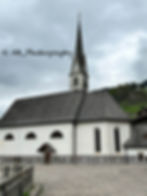
73. Lake Alleghe Panoramic Viewpoint (Punto panoramico Lago di Alleghe):
-If you're arriving by car, we suggest parking at: Corso Venezia, 45, 32022 Alleghe BL, Italy.
Located along the western shore of Lake Alleghe, this panoramic viewpoint offers stunning views of the lake, the charming village of Alleghe, and the majestic Monte Civetta.
While you can briefly stop by car for a quick photo, parking options are limited.
For a more enjoyable experience, it's recommended to use the suggested parking areas near Alleghe and take a leisurely walk to the viewpoint.
This spot is a must-visit for photography enthusiasts looking to capture the serene beauty of the Dolomites.
---------------
74. Cortina d'Ampezzo & Basilica of Saints Philip and James (Basilica dei Santi Filippo e Giacomo):
-If you're arriving by car, we suggest parking at: Parcheggio a Cortina a Pagamento Ex Mercato.
Cortina d'Ampezzo, affectionately known as the "Queen of the Dolomites," is a premier alpine destination located in the Veneto region of Northern Italy. Famous for its stunning mountain views, high-end amenities, and rich cultural heritage, Cortina offers year-round attractions—from world-class skiing in winter to hiking and mountain biking in summer. The town's elegant charm and vibrant atmosphere make it a favorite among travelers seeking both adventure and relaxation.
At the heart of Cortina is the Basilica of Saints Philip and James (Italian: Basilica dei Santi Filippo e Giacomo), which highlights the town's historical and spiritual significance. Constructed between 1769 and 1775 in the Baroque style, this basilica was built on the site of two earlier churches that date back to the 13th and 16th centuries. Its interior features exquisite frescoes by local artist Giuseppe Ghedina and a beautifully crafted wooden altar by Andrea Brustolon. The accompanying bell tower, which rises to 65.8 meters (215 feet), is an iconic part of Cortina's skyline, with the surrounding Dolomite peaks offering a unique and breathtaking view.
Whether you're exploring the bustling Corso Italia, enjoying local cuisine, or admiring the architectural beauty of the basilica, Cortina d'Ampezzo promises an unforgettable experience that seamlessly blends natural beauty with cultural richness.

75. Lake Landro (Dürrensee):
-If you're arriving by car, we suggest parking at: the parking area by the lake (Area di Parcheggio). [The parking lot requires payment at the onsite machines, which accept credit cards or cash, or via the EasyPark app].
Dürrensee, also known as Lake Landro, is a serene alpine lake located at an elevation of 1,406 meters (4,613 feet) in the Höhlensteintal Valley, within the Three Peaks Nature Park. Surrounded by the stunning Cristallo Group, the lake's turquoise waters beautifully reflect the nearby peaks, creating a picturesque setting for visitors.
Despite its high elevation, Dürrensee is one of the warmer lakes in the Dolomites, making it a great spot for a refreshing swim during the summer months. Its convenient location along the road between Dobbiaco and Cortina d'Ampezzo makes it an easy stop if you are seeking natural beauty without having to trek far.
For those who want to explore further, there is a loop trail around the lake that offers a leisurely hike, taking about 1.5 hours to complete. Whether you're capturing the tranquil landscape through photography or simply enjoying the peaceful atmosphere, Dürrensee provides a memorable experience in the heart of the Dolomites.

76. Tre Cime di Lavaredo Panoramic Viewpoint (Vista Panoramica Tre Cime Lavaredo):
-If you're arriving by car, we suggest parking at: Parkplatz Drei Zinnenblick .
The Tre Cime di Lavaredo Panoramic Viewpoint offers an incredible view of the iconic Three Peaks, a defining feature of the Dolomites. It is easily accessible with a short walk from the nearby parking area, making it an ideal location to enjoy the stunning beauty of the peaks without undertaking a demanding hike. This viewpoint is particularly popular among photographers and nature enthusiasts who wish to experience the grandeur of the Dolomites in a more relaxed atmosphere.
77. Lake Dobbiaco (Lago di Dobbiaco) & Lake trail and Viewpoint (Aussichtspunkt am See):
-If you're arriving by car, we suggest parking at: Parkplatz am Toblacher See [The parking lot requires payment at the onsite machines, which accept credit cards or cash, or via the EasyPark app].
Lake Dobbiaco, also known as Toblacher See, is a beautiful alpine lake located at an elevation of 1,176 meters (3,858 feet) not far from Lake Landro. Nestled between the Three Peaks and the Fanes-Sennes-Braies Nature Parks, this serene lake is both fed and drained by the Rienza River. It is famous for its emerald-green waters and the stunning Dolomite peaks that surround it. A 2.5 km (1.5-mile) nature trail encircles the lake, featuring informative stations that provide insights into the local flora, fauna, and geology. The trail is mostly flat and accessible for strollers, making it suitable for visitors of all ages.
The Lake Viewpoint (Aussichtspunkt am See), located on the western shore, offers panoramic views of the lake and its mountainous backdrop. This spot is perfect for photography and birdwatching, especially in spring and autumn, when migratory birds frequent the area. In the summer, you can rent pedal boats to explore the lake's tranquil waters.
Whether you are looking for a leisurely walk, a peaceful boat ride, or simply a moment to enjoy nature's beauty, Lake Dobbiaco and its viewpoint offer a memorable experience in the heart of the Dolomites.
78. San Candido:
-If you're arriving by car, we suggest parking at: Parcheggio Mantiger [The parking lot requires payment at the onsite machines, which accept credit cards or cash, or via the EasyPark app].
San Candido, also known as Innichen, is a charming alpine town nestled in the Alta Pusteria Valley near the Austrian border. It beautifully blends Italian and Austrian cultures, and is surrounded by the majestic peaks of the Dolomites, offering a wonderful mix of natural beauty and rich history.
A highlight of the town is the 12th-century Innichen Abbey, which is regarded as one of the finest examples of Romanesque architecture in the Eastern Alps. In this town, you can stroll through the pedestrian-friendly center, where colorful Tyrolean buildings house delightful shops and cafes. In winter, the nearby Baranci ski area features family-friendly slopes, while summer invites exploration of scenic hiking and cycling trails, including routes that lead to the iconic Tre Cime di Lavaredo.
San Candido's unique blend of cultural heritage and outdoor adventure makes it a must-visit destination in South Tyrol.

79. Via Peter Paul Rainer:
Via Peter Paul Rainer is a charming pedestrian street in the center of San Candido (Innichen), named after a local writer. This lively avenue features colorful Tyrolean buildings, boutique shops, and cozy cafés, making it ideal for a stroll. Key landmarks include the Dolomythos Museum, showcasing the geology and myths of the Dolomites, and the Boutique & Gourmet Hotel Orso Grigio, known for its refined accommodations. Whether shopping for local specialties or enjoying coffee with mountain views, Via Peter Paul Rainer embodies the alpine charm of San Candido.

80. Villa Wachtler:
Villa Wachtler, located in the heart of San Candido, is an impressive Alpine Art Nouveau villa built in 1911 by master baker Michael Wachtler. With its castle-like façade and intricate architectural details, it stands out as a notable landmark in the town's pedestrian zone.
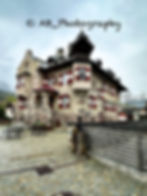
81. Parish Church of St. Michael (Parrocchia di San Michele):
Located in the centre of San Candido, the Parish Church of St. Michael (Parrocchia di San Michele Arcangelo) is a striking example of Baroque architecture. Originally built in the 12th century in Romanesque style, it underwent a significant transformation in 1735, embracing the ornate aesthetics of the Baroque and Rococo periods.
The church features arched windows and niches with statues on its façade, while the interior showcases elaborate frescoes by Christoph Anton Mayr, illustrating scenes from St. Michael's life and theological allegories. The original cylindrical bell tower from the Romanesque structure is still present.
As one of the most beautiful sacred buildings in South Tyrol, the Parish Church of St. Michael offers a glimpse into the rich religious and artistic heritage of the region.

---------------
82. Lake Braies (Lago di Braies / Pragser Wildsee):
-If you're arriving by car, we suggest parking at: Parking P4 Pragser Wildsee (Prebooking is needed for more details, click here)
Lake Braies is one of the most iconic and photogenic locations in the Dolomites, situated at an elevation of 1,496 meters (4,908 feet) within the Fanes-Sennes-Braies Nature Park. Surrounded by towering limestone peaks and lush forests, its crystal-clear emerald waters create a picture-perfect alpine getaway.
Parking Advisory: During the peak summer months (July to September), access to the lake by private vehicle is restricted from 9:30 AM to 4:00 PM. To guarantee entry and secure a parking spot at the nearest lot (P4), it is essential to book a Day-Stay Ticket in advance through the official website, click here for more details. The €38 ticket includes a reserved parking space and a €15 meal voucher that can be redeemed at on-site eateries like Emma's Bistro and the Panorama Restaurant & Chalet.
A scenic 3.7 km (2.3-mile) circular trail loops around the lake, making it ideal for an easy walk that takes approximately 1.5 to 2 hours, complete with countless photo opportunities. You can also rent classic wooden rowboats for a peaceful paddle across the lake or simply relax by the shore while soaking in the dramatic mountain views. Tip: Consider taking a short detour to the charming Chapel of Lago di Braies or explore longer hikes, such as the one leading into Val di Foresta, for those seeking more adventure.
Pro Tip: Visit in the early morning or late afternoon to avoid the crowds and experience the lake at its most serene.
How to Reach Lake Braies Without a Car - By Bus: Visiting Lake Braies without a private vehicle is entirely feasible thanks to efficient public transportation options:
-Bus 442: This line connects Dobbiaco (Toblach) and Villabassa (Niederdorf) directly to Lake Braies. The journey takes approximately 30 minutes. During the peak season (July to September), advance online booking and prepayment are required.
-Bus 439: This is a seasonal shuttle that operates between Monguelfo (Welsberg) and Lake Braies during the same peak period. Reservations and prepayment are mandatory.
---------------
83. Bruneck Castle (Schloss Bruneck) & The Suspension Bridge (Hängebrücke):
-If you're arriving by car, we suggest parking at: Reischacherstraße / Via Riscone.
Bruneck Castle (Schloss Bruneck), perched atop a hill overlooking the town of Bruneck, was built in the mid-13th century by Prince-Bishop Bruno von Kirchberg to protect the bishopric's interests in the Puster Valley. Today, the castle is home to the Messner Mountain Museum Ripa, which is dedicated to the cultures of mountain peoples from around the world and curated by renowned mountaineer Reinhold Messner.
A short walk from the castle leads to a charming suspension bridge (Hängebrücke) that offers picturesque views of the surrounding landscape and provides a unique vantage point over the town. This bridge is part of several local walking trails, making it a delightful addition to a leisurely exploration of Bruneck's historical and natural attractions.
84. Bruneck (Brunico):
-If you're arriving by car, we suggest parking at: Parcheggio Centro [The parking lot requires payment at the onsite machines at the end of the parking period, which accept credit cards or cash].
Bruneck (Brunico) is a lively town located at an altitude of 835 meters (2,740 feet) in the Puster Valley of South Tyrol. This charming town beautifully combines medieval heritage with modern alpine living. Its historic center, especially the pedestrianized Via Centrale- Stadtgasse, features colorful façades, boutique shops, and inviting cafés, all reflecting a rich history that dates back to the 13th century.
Bruneck combines architectural beauty with cultural experiences and museums. Located at the confluence of the Ahr and Rienz rivers, it serves as a gateway to the Kronplatz ski area, featuring 119 kilometers of slopes for all skill levels in winter. Whether exploring history, enjoying winter sports, or relaxing in the alpine atmosphere, Bruneck offers a unique blend of culture and adventure.
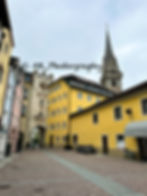
85. Ursuline Church (Ursulinenkirche):
Located near the western entrance of Bruneck's old town, the Ursuline Church (Ursulinenkirche) is a tranquil Gothic treasure from the early 15th century. Originally known as the "New Church" (Neukirche) when it was built in 1411, it became part of the Ursuline convent in 1742.
Inside, you can admire delicate frescoes by Johannes of Bruneck, dating from around 1420, as well as Bruneck's oldest crypt, which dates back to approximately 1410.
The church's slender spire and understated elegance provide a quiet yet significant stop for those exploring the town's rich spiritual and artistic heritage.
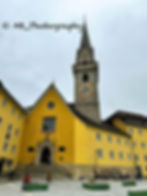
86. Ursuline Gate (Ursulinentor):
The Ursuline Gate, situated near the Ursuline Church at the western entrance of Bruneck's Stadtgasse, is one of the town's four preserved medieval city gates. It features a fresco by Johannes of Bruneck from around 1420, depicting St. Christopher, a crucifixion scene, and various coats of arms.
In 1758, the gate was enlarged to allow the transport of a large fountain into the town, which unfortunately damaged the lower part of the fresco.
Passing through this gate leads into the charming historic center of Bruneck, offering a glimpse into the town's rich history.
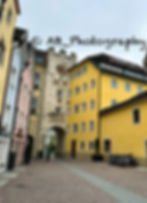
87. Via Centrale:
Via Centrale, also known as Stadtgasse, is the bustling main street of Bruneck's old town. Lined with colorful medieval facades, ornate bay windows, and wrought-iron signs, it offers a delightful blend of history and modernity.
This pedestrian-friendly avenue is perfect for leisurely strolls and features a mix of traditional shops, trendy boutiques, and inviting cafés.
Whether you are shopping, dining, or simply soaking in the atmosphere, Via Centrale captures the essence of Bruneck's charm.

88. Rienz Gate ( (Porta della Rienza):
The Rienz Gate (Rienztor), also known as Porta della Rienza, is one of Bruneck’s historic city gates, discreetly located between buildings near the Rienz River.
Dating back to the medieval period, it once served as an important entrance to the town, connecting the city center to the surrounding areas.
Today, its presence provides a glimpse into Bruneck's rich history, marking the transition from the bustling modern town to its storied past.

89. Parish Church of the Assumption of Mary (Chiesa Madre di Santa Maria Assunta):
Dominating Bruneck’s skyline with its twin towers and bright yellow façade, the Parish Church of the Assumption of Mary (Chiesa Madre di Santa Maria Assunta) stands as a testament to the town’s rich religious and architectural heritage.
Originally established as a small chapel in the 13th century, the church has evolved over the centuries, incorporating elements of Gothic, Classicist, and Neo-Romanesque styles.
Notable features include frescoes by Tyrolean artists Georg Mader and Franz Hellweger, as well as a bronze bas-relief created in 1620. With its serene interior and significant historical value, the church is a must-visit for anyone exploring Bruneck’s cultural landmarks.
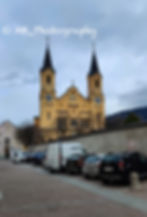
90. Vipiteno:
-If you're arriving by car, we suggest parking at: Parking Vipiteno Centre [The parking lot requires payment at the onsite machines at the end of the parking period, which accept credit cards or cash].
Vipiteno (Sterzing), the northernmost town in Italy, is a charming blend of Alpine tradition and medieval elegance. Its vibrant main street, lined with pastel-colored facades and arcades, leads to the iconic Torre delle Dodici (Zwölferturm), a 15th-century clock tower that symbolizes the town's rich history.
Surrounded by the majestic Alps, Vipiteno offers a picturesque setting perfect for leisurely strolls and exploration. The town's unique position near the Austrian border infuses it with a delightful mix of cultures, which is evident in its architecture, cuisine, and local traditions. Whether you're interested in history, culture, or simply breathtaking mountain views, Vipiteno offers a captivating stop in South Tyrol.
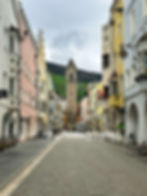
91. Città Nuova street (New Town):
Città Nuova, or New Town, is the elegant southern section of Vipiteno’s main street, beginning at the iconic Torre delle Dodici.
This area was developed after a devastating fire in 1443 and reflects the town’s Renaissance prosperity. It features grand 15th- and 16th-century merchant houses, complete with ornate bay windows and intricate wrought-iron signs.
The pedestrian-friendly street is lined with a delightful mix of local shops, inviting cafés, and traditional restaurants, making it an ideal spot for leisurely strolls and sampling regional flavors.
Whether you’re browsing artisanal boutiques or enjoying a coffee at a sidewalk café, Città Nuova offers a quintessential South Tyrolean experience.

92. Statue of Saint John of Nepomuk (Statua di San Giovanni Nepomuceno):
In the heart of Vipiteno's New Town, a marble statue of Saint John of Nepomuk stands as a silent guardian.
Erected in 1739 after devastating floods, this monument honors the Bohemian saint, who is revered as the protector against water-related disasters.
Located near the town hall, the statue not only holds spiritual significance but also contributes to the town's rich array of historical landmarks.
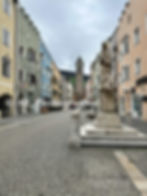
93. Tower of the Twelve (Zwölferturm):
Standing at 46 meters (151 feet), the Tower of the Twelve (Zwölferturm) is the tallest building in Vipiteno and serves as a symbol of the town's rich history.
Constructed between 1468 and 1472 over the former Upper Gate, it originally functioned as the upper town gate, separating the New Town (Neustadt) from the Old Town (Altstadt).
The tower's name comes from its bell, which historically rang at noon to mark the midday break for the townspeople. After a fire in 1867 destroyed its original Gothic spire, the tower was rebuilt with the current stepped gable roof.
Today, it remains a central feature of Vipiteno's skyline.
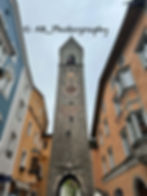
94. Bäckerei Konditorei Cafe Häusler:
Located in the charming Città Nuova of Vipiteno, Bäckerei Konditorei Café Häusler has been a beloved destination for locals and visitors alike since 1830.
This family-run bakery offers a delightful selection of handcrafted breads, pastries, and cakes, all made using traditional recipes.
Whether you're in the mood for a buttery croissant, a slice of apple strudel, or a savory snack, it's the perfect place to indulge in the flavors of South Tyrol.
You can enjoy your treat inside the cozy café or at one of the outdoor tables, soaking in the vibrant atmosphere of the town's main street.

Beyond South Tyrol, Trentino, and the Dolomites: Other Breathtaking Italian Cities and Regions That Will Steal Your Heart:
1. Venice:
Venice is a floating breathtaking jewel crafted by centuries of artistry and innovation. As you navigate the enchanting canals, the city unfolds its secrets, with each cobblestone telling stories of ancient splendor. From the stunning vibrancy of Murano glass to the romantic allure of gondola rides, Venice is a living masterpiece that harmonizes rich history with the energy of contemporary life.
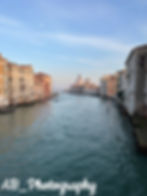
2. Lake Garda:
Lake Garda is a destination that captivates your heart from the very first glance. With its crystal-clear waters, charming lakeside towns, dramatic mountain backdrops, and a relaxed Mediterranean atmosphere, it offers something for everyone. Whether you enjoy hiking, wine tasting, water sports, or simply soaking in stunning views, Italy's largest lake has activities for every type of traveler.
From the medieval charm of Sirmione to the panoramic vistas atop Monte Baldo, each town around the lake has its own unique allure. Whether you're seeking adventure, relaxation, or culinary delights, Lake Garda caters to every traveler's desires.
3. Lake Como – A Timeless Charm nestled by the Alps:
Discover the serene elegance of Lake Como, where majestic alpine peaks meet deep-blue waters. Charming towns like Bellagio and Varenna invite you to explore their picturesque lakeside promenades, historic villas, and beautiful botanical gardens. Imagine strolling along shaded terraces, drifting on a boat past iconic estates, and sipping an aperitivo as the sun sets behind the Alps. Lake Como offers a perfect blend of natural beauty, refined style, and authentic Italian charm.
In our trip summary, we’ll guide you through every unforgettable moment, from hidden viewpoints and peaceful village alleys to carefully selected ferry routes and lakeside dining tips. With insider recommendations and a user-friendly Google Maps itinerary, planning your dream visit has never been easier.
4. Tuscany Region (Florence, Pisa, Siena, etc.):
Discover the artistic treasures of Florence, the awe-inspiring Leaning Tower of Pisa, and the enchanting medieval streets of Siena. Join us as we wander through picturesque cobblestone pathways, indulge in mouthwatering Tuscan cuisine, and embrace the region's vibrant cultural legacy. Prepare to be entranced by breathtaking landscapes, timeless architecture, and the genuine warmth of Tuscan hospitality.
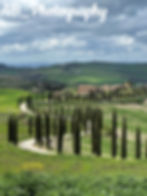
5. Milan:
Milan, the fashion capital of Italy, is a city that exudes sophistication, elegance, and impeccable style. Renowned for its iconic designers, chic boutiques, and stunning architecture, Milan should be at the top of any art, culture, and fashion enthusiast's travel list. Yet, this vibrant city offers more than just shopping—it's steeped in rich history and cultural heritage, featuring breathtaking churches, inspiring museums, and captivating galleries waiting to be explored.
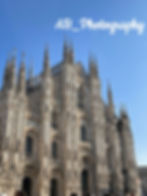
6. Rome:
Experience the vibrant capital of Italy, where every street is filled with captivating stories and every turn reveals a hidden gem. Dive into centuries of rich history and culture as you visit iconic landmarks like the Roman Forum, the Colosseum, and the stunning beauty of Vatican City. Make the most of your journey by checking out our trip summary post, brimming with essential tips and must-see attractions in Rome. Click here to embark on your unforgettable adventure today!
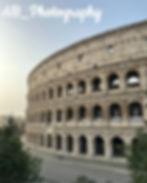
7. Amalfi coast (Positano, Amalfi, Ravello, etc.):
Explore the vibrant streets of Positano, immerse yourself in the rich history of Amalfi, and bask in the stunning views from Ravello's cliffs. Experience the charm of picturesque villages, indulge in mouthwatering Italian dishes, and delve into the area’s vibrant cultural heritage. You'll be enchanted by the breathtaking scenery, timeless architecture, and the genuine hospitality of the locals.
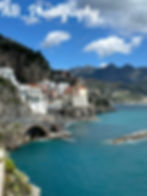
-------------------------------
For your convenience, we have created a Google Maps list of all the places mentioned in South Tyrol, Trentino, and the Dolomites, Italy: click here to see it.
For more photos and destinations, Follow my Instagram account: ab_photos_adventures, and subscribe here for updates.
Thank you for your support!
*If you found this guide helpful, we’d genuinely appreciate a positive review on our Facebook page :)
Did You Find This Guide Helpful?
Yes:)
No:)
*All the information listed in this guide is subject to the site's regulations and terms of use, which are detailed on this page: click here for the site's regulations.















































































































